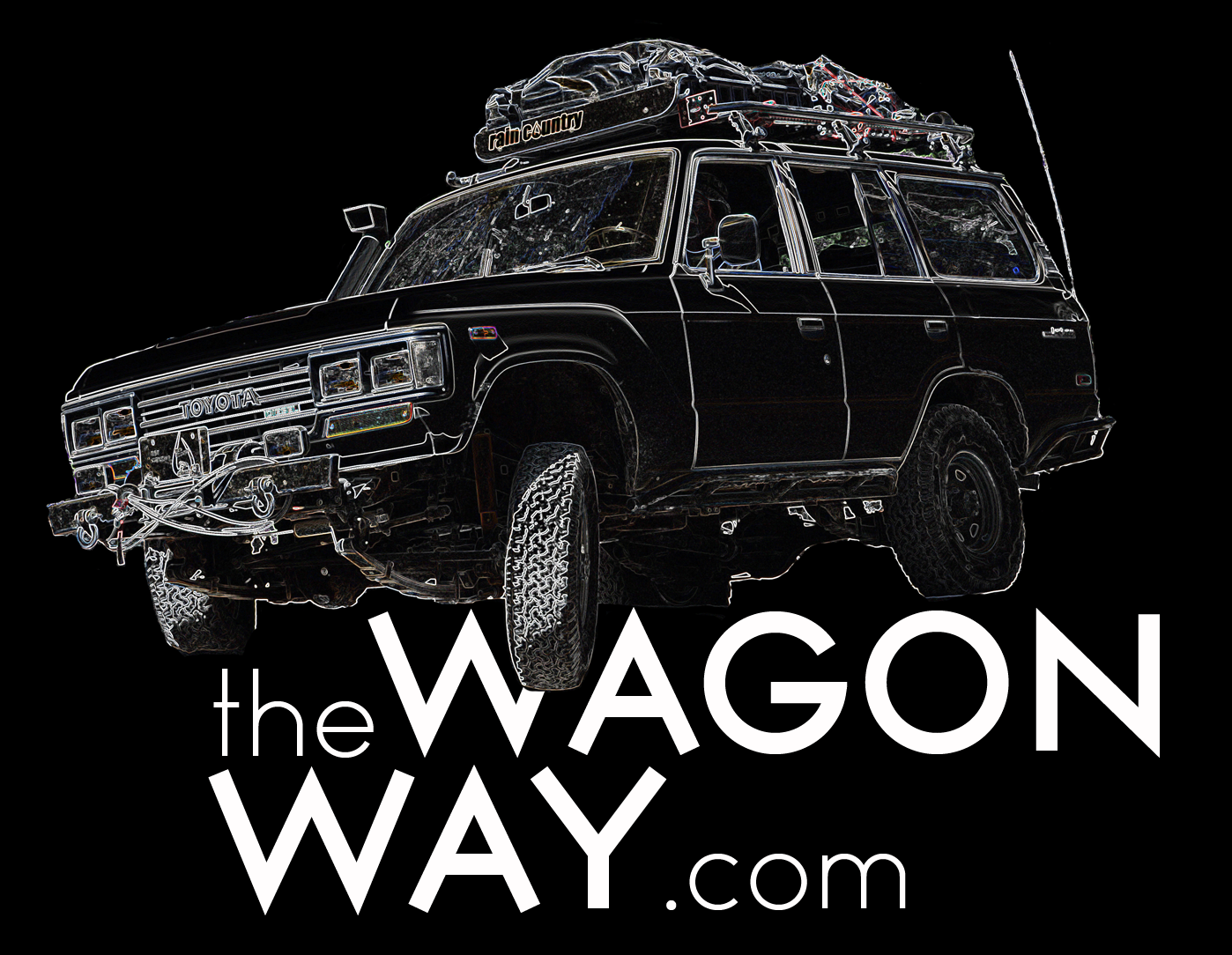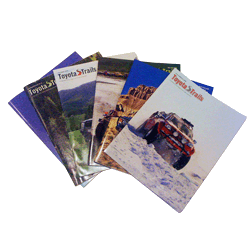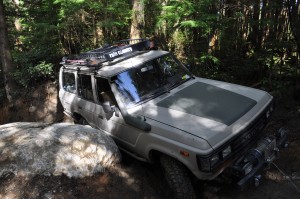 There is a lot of discussion about just what is better, short or long, wide or narrow. While our wagons are pretty much set when it comes to length there is some room to change the width either through an axle swap or wider rims. But you need to realize there are trade offs.
There is a lot of discussion about just what is better, short or long, wide or narrow. While our wagons are pretty much set when it comes to length there is some room to change the width either through an axle swap or wider rims. But you need to realize there are trade offs.
Recently I got to go wheeling with two very different FJ 40’s that pointed out differences in wheelbase and track width very clearly. And it was really interesting to see how my wagon and their 40’s all handled the same obstacles.
Now both of these 40’s are heavily modified but they had the same basic powerplant, similar oversize tires and slightly different gearing. But the real difference was in width and length. While James’ 40 sits on the stock footprint (55″ axles and a 90″ wheelbase) Ross’ rig uses an 80 series rear axle and a custom front axle that are almost 8″ wider than a stock 40 and he also added 12″ to the wheelbase when he converted over to a four link set up. And both of these guys are experienced wheelers.
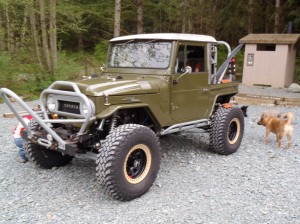 The first log we had to cross set the tone for the day. Things were a bit slick and I managed to slip off and it took the winch to pull me straight so I could get over it. Ross even struggled a bit but got over without help and James made it look easy with his stock footprint 40. But the next rockpile was very different. I wisely chose the bypass as my wagon never would have made it without help or carnage. Ross came through with almost no effort but James made a couple of attempts before backing off and going around the way I did. Two obstacles within 30 yards of each other with two very different outcomes.
The first log we had to cross set the tone for the day. Things were a bit slick and I managed to slip off and it took the winch to pull me straight so I could get over it. Ross even struggled a bit but got over without help and James made it look easy with his stock footprint 40. But the next rockpile was very different. I wisely chose the bypass as my wagon never would have made it without help or carnage. Ross came through with almost no effort but James made a couple of attempts before backing off and going around the way I did. Two obstacles within 30 yards of each other with two very different outcomes.
As anyone who has driven an FJ 40 up or down a steep trail or drop off knows, extra length would definitely be better. Short wheelbase rigs can feel like they are going to go over frontwards or backwards at an inopportune moment. This generally is not an issue with our wagons. But don’t be fooled, length alone is not always the best answer. In that first pic with the giant rock I got to a point that I had to finish up with a winch while both the shorter 40’s were able to drive around it. Including Ross’s which is close to the same wheel base as my wagon as well as more than 8″ wider than my wagon due to the axles and tire size. So remember that ride height and tire size can be just as important as wheelbase. Just so you know, Ross is running 37’s, James has 35’s and I am on the dinky 33’s…
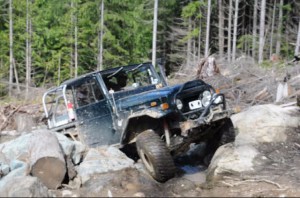 And all through the day we had the same story. At times the short rig was better and at others the longer wheelbase was definitely an advantage. I even had to smile on the way out that day as Ross had to back up to make a corner just like I have to frequently do with my wagon! But my guess is that this won’t happen very often in the future as he gets used to the new wheelbase and track width of his rig. This was the initial shake down run for his freshly rebuilt 40 and he had never been to the trails we were on that day so you have to factor that in as well.
And all through the day we had the same story. At times the short rig was better and at others the longer wheelbase was definitely an advantage. I even had to smile on the way out that day as Ross had to back up to make a corner just like I have to frequently do with my wagon! But my guess is that this won’t happen very often in the future as he gets used to the new wheelbase and track width of his rig. This was the initial shake down run for his freshly rebuilt 40 and he had never been to the trails we were on that day so you have to factor that in as well.
But there are times when a shorter wheelbase is definitely an advantage. Really twisty trails are hard on my arms with the length and manual steering of my wagon. Even on the trails I am used to, I find myself backing up to make a corner while a 40 will just drive around it. But this is something that a wagon driver just learns to live with.
Width can be important when it comes to feeling like you are going to tip over. Narrow rigs just feel tippy. Some of this can be overcome by limiting your ride height but often the rocks you crawl on require a bit more clearance. The extra width Ross added, definately changed how he felt in his rig. A difference also appreciated by Cadri, his better half, who spent alot of time in the rig when it was 8 in narrower as well as 6 in taller. But on occasion too much width can create problems of its own. Later in the day we can across some rocks that James rig was able to drive right in between but Ross’s rig had to go over the top of one of them, and this was a big rock… A wider rig will also have a slightly larger turning radius than a narrow rig with the same wheelbase.
It will be interesting to see how different the two 40’s handle the same trails this summer….
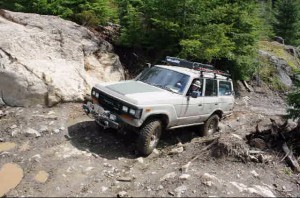 What it all boils down to is that you need to tailor your rig to the trails you like as well as how you want to drive them. Its not just wheelbase that determines how well you rig handles a trail. Its a balance between many options, ride height, tire size, track width, suspension, departure and approach angles and wheelbase. Changing just one thing effects many others. Some for the better, others not so much. I wish I had a simpler answer for you. But finding that balance is the magic fix that will make your days in the woods more fun. It also seems to be why we keep tinkering with our rigs.
What it all boils down to is that you need to tailor your rig to the trails you like as well as how you want to drive them. Its not just wheelbase that determines how well you rig handles a trail. Its a balance between many options, ride height, tire size, track width, suspension, departure and approach angles and wheelbase. Changing just one thing effects many others. Some for the better, others not so much. I wish I had a simpler answer for you. But finding that balance is the magic fix that will make your days in the woods more fun. It also seems to be why we keep tinkering with our rigs.
